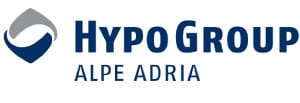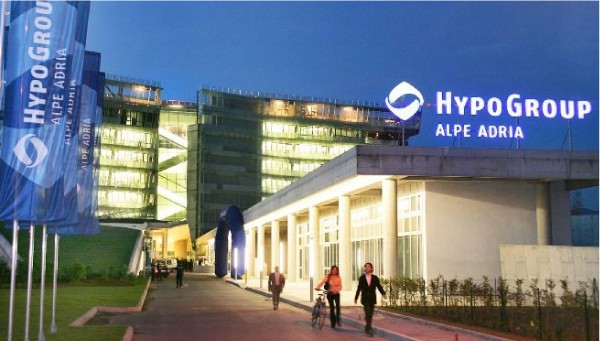IGEL Secure Endpoint OS
for Now and Next
IGEL is a transformative secure endpoint OS designed for SaaS, DaaS, VDI and secure browser environments. IGEL significantly reduces endpoint TCO and your endpoint attack surface.


When Hypo Alpe-Adria-Bank’s subsidiary in Croatia wanted to move from distributed to centralized management of its Microsoft Windows desktop environment, the need to migrate from the no longer supported Windows XP proved the perfect opportunity to virtualize and implement IGEL technology desktops.
With the possibility of using the existing old PCs with the UDC2 solution, the key criteria became the central and identical administration of the real endpoints and UDC endpoints. IGEL was not the cheapest vendor on the market, but we found the prices to be fair providing a good return for the investment.
Hypo Group Alpe Adria AG (HGAA) is an international banking and finance group consisting of subsidiaries in Croatia, Slovenia, Serbia, Bosnia-Herzegovina and Montenegro with headquarters in Klagenfurt, Austria. Hypo Alpe-Adria-Bank has been present in Croatia as of 1996 and has since then continuously developed its business and has over the years become one of the six largest banks in Croatia market today.
When Hypo Alpe-Adria-Bank’s subsidiary in Croatia wanted to move from distributed to centralized management of its Microsoft Windows desktop environment, the need to migrate from the no longer supported Windows XP proved the perfect opportunity to virtualize and implement IGEL technology desktops.
“The bank had been considering moving to centralized management of its Windows desktop environment for some time and the need to upgrade to Windows 7, because Windows XP was no longer going to be supported, was the perfect opportunity,” said Toni Glavinic, head of IT Operations.
However, some of the PCs at the organization were aged and were going to struggle to cope with the Windows 7 upgrade.
The IT team looked at the options and decided that virtualizing the desktop infrastructure and converting the existing PCs to IGEL endpoint-like devices using IGEL’s Universal Desktop Converter 2 solution and switching some of the oldest PC for IGEL UD3 endpoints would be the best solution.
We analyzed almost all the relevant players on the endpoint market at the time,” said Glavinic, adding:
“With the possibility of using the existing old PCs with the UDC2 solution, the key criteria became the central and identical administration of the real endpoints and UDC endpoints. IGEL was not the cheapest vendor on the market, but we found the prices to be fair providing a good return for the investment.”
The Universal Desktop Converter 2 (UDC2) endpoint software provides a highly effective alternative to traditional endpoint hardware. The software is installed as the operating system on PCs, notebooks and selected endpoints, and turns the hardware into a powerful software-based and universally deployable endpoint allowing secure access to almost all centralized IT infrastructures. Users have stable and reliable access to cloud computing services, server based computing (SBC) applications and virtualized desktops (VDI). The local desktop operating systems are unified and standardized, and are centrally managed by IGEL’s user friendly Universal Management Suite (UMS), the industry’s leading device management platform. The UDC2 software is available at a low, one time cost. The UMS is included free of charge.
“Moving to this approach will increase the levels of efficiency in managing the infrastructure, extend the lifetime of the users’ workstations and increase the levels of information security by centralizing the risk,” explained Glavinic.
Over a two-year period, the bank has converted 1100 existing PCs to IGEL like devices and installed 40 IGEL UD3 LX endpoints for 75% of the staff. The remaining 25% are currently PC power users. The devices connect to the Windows servers using Citrix XenApp and the server environment is virtualized with VMware VSphere. The IGEL endpoints are set-up in kiosk mode with an autostart Citrix ICA connection to the Citrix XenApp desktop. Some specific clients use smart card readers and there is the possibility that the bank will add signature pads to the devices in the future.
IT adaptations required for the implementation included the management of external devices such as smart card readers, branch printers and monitors, establishing central roaming Windows user profiles, the virtualization of applications and the reconfiguration of security policies
All the IGEL desktops are managed using the IGEL Universal Management Suite software (UMS), which comes free with every device. The UMS can be used to set-up, maintain and upgrade all IGEL endpoints from a central location using a policy-based graphical interface. It is a simple to use management tool, which can have endpoints up and running in minutes. Intuitive to use, secure and scalable up to 100,000 endpoints, the IGEL UMS drastically reduces management time for IT administrators.
By not replacing the PCs, servers and software, the bank estimates that it saved 400,000 Euros by switching to the IGEL solution, with Glavinic adding “The biggest savings are now visible in the more effective centralized management of the desktop environment.”
“The feedback from the users and IT team has been good because their desktops are faster than the old Windows XP PCs and the system administrators experience a sense of increased efficiency.”
Moving forward, Glavinic believes the management and development of the desktop infrastructure will be much simpler with centralized control. In addition, the team now feels confident virtualizing the desktops of the power users that are still currently using PCs and introducing Citrix XenDesktop for even further improved management and delivery of applications, security and access.